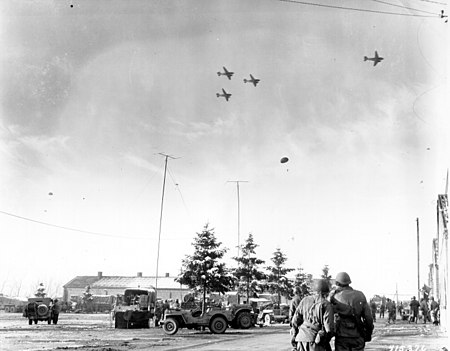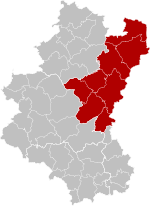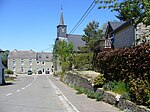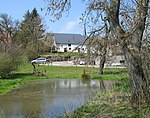Siege of Bastogne

The siege of Bastogne (French pronunciation: [bas.tɔɲ] ) was an engagement in December 1944 between American and German forces at the Belgian town of Bastogne, as part of the larger Battle of the Bulge. The goal of the German offensive was the harbor at Antwerp. In order to reach it before the Allies could regroup and bring their superior air power to bear, German mechanized forces had to seize the roadways through eastern Belgium. Because all seven main roads in the densely wooded Ardennes highlands converged on Bastogne, just a few miles away from the border with neighboring Luxembourg, control of its crossroads was vital to the German attack. The German offensive began on 16 December. Although outnumbered, the regiments of the 28th Infantry Division delayed the German advance towards Bastogne, allowing American units, including the 101st Airborne Division, to reach Bastogne before the German forces surrounded the town and isolated it on 20 December. Until 23 December, the weather prevented Allied aircraft from attempting to resupply Bastogne or from performing ground attack missions against German forces. The siege was lifted on 26 December, when a spearhead of the 4th Armored Division and other elements of General George Patton's Third Army opened a corridor to Bastogne.
Excerpt from the Wikipedia article Siege of Bastogne (License: CC BY-SA 3.0, Authors, Images).Siege of Bastogne
Rue de la Fontaine,
Geographical coordinates (GPS) Address Nearby Places Show on map
Geographical coordinates (GPS)
| Latitude | Longitude |
|---|---|
| N 50 ° | E 5.7214 ° |
Address
Rue de la Fontaine 15
6600 (Bastogne 2)
Luxembourg, Belgium
Open on Google Maps








